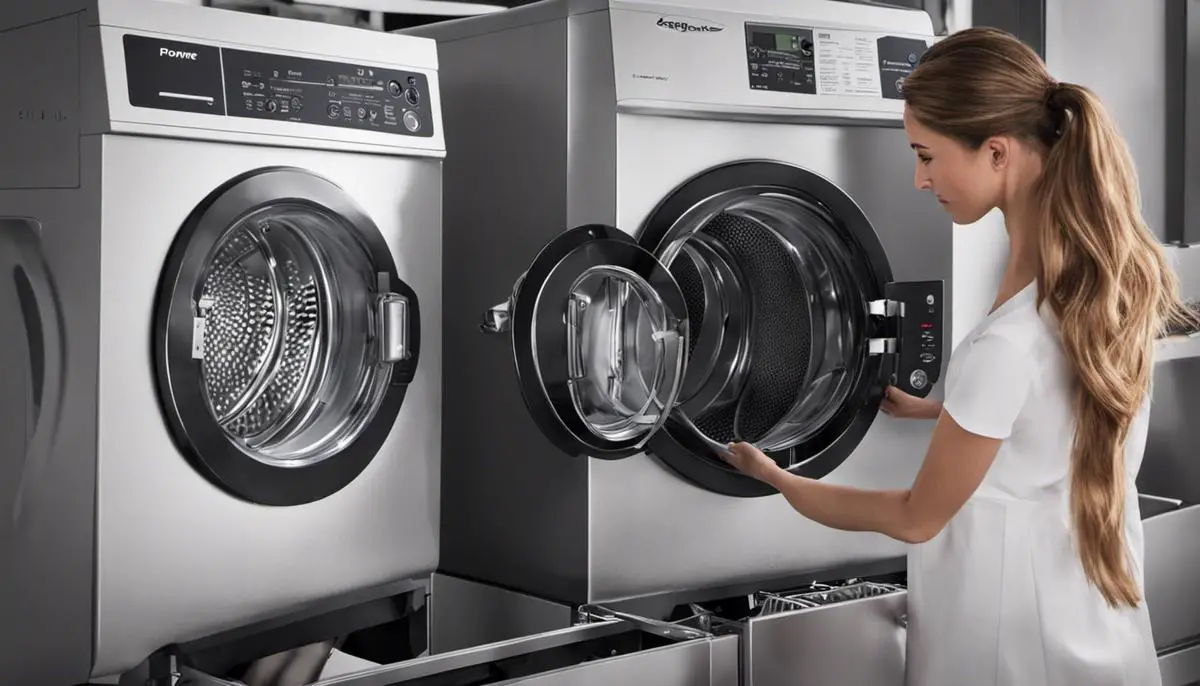Modern conveniences such as our laundry appliances are often taken for granted, until such time they malfunction and remind us of their invaluable utility. One common issue that the do-it-yourself individual frequently encounters with dryers is a defective heating element.
Knowing how to efficiently replace a heating element not only saves on repair costs but also minimizes appliance downtime. This document addresses the important steps that hobbyists, like you, need to carefully handle and perform this task. It includes instructions on disconnecting the dryer safely, correctly identifying the defective heating element, and detailed guidance on how to replace it.
Disconnecting the Dryer
The Safe Way to Disconnect Your Dryer for Repair
If you’re a DIY enthusiast with an affinity for solving household appliance puzzles, there comes a time when the trusted dryer will need a little tune-up. Prior to tackling any repair work, the first step will invariably be disconnecting the dryer safely. When done correctly, it’s a reasonably straightforward process that largely entails precautionary measures. So, strap on the trusty tool belt, it’s time to dive in!
First things first, safety is paramount. Dryers use substantial voltage, and just because it’s off doesn’t eliminate the hazard. Just to be abundantly safe, turn off the circuit breakers or fuses that connect to the dryer circuit. Always remember that ensuring the power is entirely disconnected prevents any unwarranted electric shocks.
The next step to successfully disconnect a dryer involves ensuring the dryer is unplugged from its power source. disconnecting the breakers or fuses is simply not enough. Do note that the plugs for dryers can be large and somewhat unwieldy, so take caution when removing the connection.
Next on the docket is detaching the dryer vent. Starting at the point where the vent exhausts out of the dryer, slowly detach the vent hose. This part may seem fairly simple, but paying attention to the procedure can prevent any potential damage to the vent connections. The vent hose will typically be held in position by a clamp that can easily be loosened with a regular screwdriver. Be sure to meticulously keep track of clamps or screws; they have a habit of getting lost when you least expect it!
With the power and venting disconnected, now your dryer is almost ready for repair or maintenance. But old buddy, hold your horses, there’s one more thing! Many dryers use natural gas, and here’s where this becomes a crucial step: disconnecting the gas line. On seeing a gas line, please tread lightly. Turn off the gas supply at the source. The valve is usually right next to the dryer and clearly marked. Turn it to the off position, and then disconnect the dryer’s gas line.
Remember, this might make a small ‘psssh’ sound, but that’s normal. Nevertheless, if you smell gas at any point, cease your repair efforts immediately and call in a professional. There’s no room for compromise when it comes to safety with gas appliances.
With the dryer’s power, vent, and gas line securely disconnected, it’s now ready for a feasible repair. Now you can orchestrate maintenance with confidence, knowing the safety steps are neatly tucked behind. May this endeavor of unknotting the complexities of a DIY dryer repair be a fruitful addition to your household maintenance repertoire! Happy fixing!

Identifying the Defective Heating Element
Continuing on our journey of identifying a faulty heating element in your dryer, let’s delve into the heart of this well-loved machine. Having already safely disconnected both the power and gas sources, as well as detaching your vent hose, we’re now equipped to proceed with our mission.
Your next task involves getting access to the dryer’s interior parts. This usually requires removing the front panel or, in some models, the back panel – specifics will vary depending on your dryer’s make and model. A quick Google search on removing your specific machine’s panel should yield helpful results. Keep in mind as you go: refrain from forcing anything open, you should be able to find screws or clips that can be easily removed.
With the panel off, the inner workings of the machine are now visible. The heating element in most dryers is a large coil or series of coils usually nestled inside a canister. Just a reminder here; if you notice any damaged or frayed wires leading to this element, there’s a strong possibility that those could be your problem, and the heating element might not be faulty at all.
For the actual test, you’ll need a multimeter, an impressive tool absolutely essential for any home tinkerer. Set the multimeter to check resistance, also known as the ohms check. Setting the value to the lowest resistance (usually 200), touch the multimeter probes to the terminals of the heating element coil – one probe to each terminal.
An unbroken heating element would offer a reading of somewhere between 10 and 50 ohms, but these values can vary depending on your specific appliance. If there is no reading or an extremely high reading, it is an indication that your heating element may be faulty. Essentially, no reading means that the electrical path, right through the heating coil, is broken somewhere.
Before drawing a conclusion, however, it’s wise to physically examine the heating element coil. Look for signs of damage or breakage – a faulty heating coil can often show visible signs of wear and tear, such as burn spots.
Once the problem is identified as a faulty heating element, the replacement procedure is pretty straightforward. However, it’s pertinent to remember that dryer models can vary, and so can the replacement process. The goal is to reverse the disassembly procedure while installing the new element in place of the old one – but resist that urge to rush it! Take time to return each screw and clip to its rightful place.

Voila! No more hang drying! The satisfaction of finally getting to smoothly run your hand over warm, dry clothes fresh from your well-maintained dryer again, has its own sweet and rewarding charm – a charm best known to a DIYer like us. Enjoy a job well done.

After going through these guidelines, you have now broadened your knowledge on dryer appliance repair. This includes everything from the safe disconnection of the power supply and vent, to the recognition and troubleshooting of a defective heating element, and even to the meticulous removal and replacement of that faulty part.
By acquiring these skills, not only have you added a useful feather in your cap, but you’ve also made your home more self-reliant, saving both time and money on professional repair services. Continue stirring your enthusiasm for learning and turning various household challenges into enjoyable and rewarding experiences.

